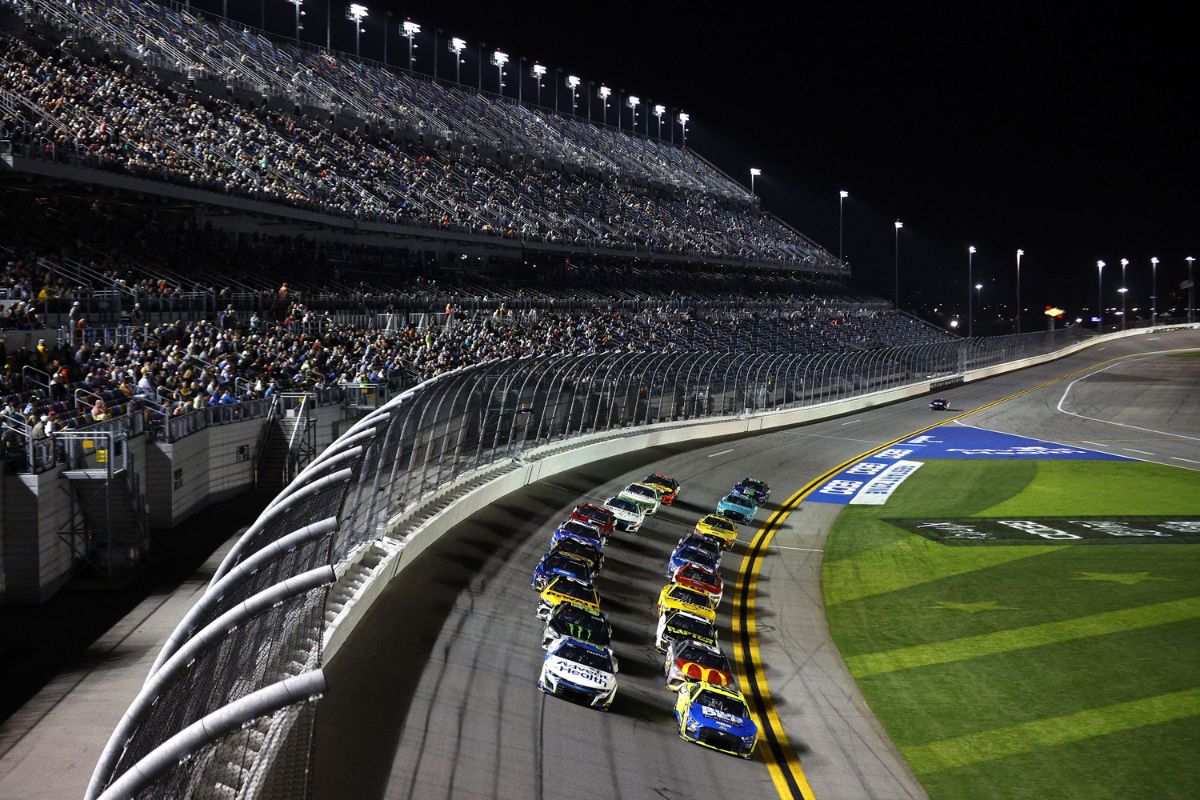Fuel Conservation in Daytona 500: As the engines roared at the iconic Daytona International Speedway, drivers found themselves in a delicate dance between speed and conservation during the Daytona 500.
The high-octane world of NASCAR racing is not just about horsepower and strategy but also about managing fuel consumption. Drivers, accustomed to pushing the limits, now face the challenge of balancing performance with the need to conserve fuel—a task that has led to mounting frustrations.
What insights can we glean from the drivers’ perspective on the intricacies of fuel-saving tactics in one of the most prestigious races in motorsports?
- Drivers struggle to balance speed and fuel conservation for competitive edge.
- Frustrations arise from maintaining positions while saving fuel effectively.
- NASCAR faces challenges in managing performance and efficiency balance.
- Adaptation and evolution crucial for addressing fuel conservation issues in elite racing circuits.
Frustrations Mount: Superspeedway Racing’s Fuel-Saving Dilemma
Amidst the adrenaline-fueled atmosphere of superspeedway racing, a growing sense of frustration permeates the Daytona 500 as drivers grapple with the intricate balance of strategic fuel-saving tactics. The race demands not only speed and skill but also a nuanced understanding of fuel management. Drivers find themselves navigating a delicate equilibrium between pushing their cars to the limit and conserving fuel for crucial moments in the race.
Erik Jones and Bubba Wallace, among others, have openly expressed their discontent with the necessity of strategic fuel-saving measures. Their frustrations stem from the challenge of maintaining competitive positions while also adhering to fuel conservation strategies. Chris Buescher’s emphasis on the impact of fuel-saving tactics on race pace and maneuverability underscores the complexity drivers face in executing these strategies effectively.
As drivers strive to find the optimal balance between speed and fuel efficiency, the Daytona 500 presents a unique challenge that tests their tactical acumen and decision-making under intense pressure. The evolving dynamics of fuel conservation in superspeedway racing continue to shape the competitive landscape of the sport.
Fuel-Saving Woes: A Driver’s Perspective on Daytona 500 Tactics
The Daytona 500 drivers’ frustrations with fuel-saving strategies at superspeedways highlight the intricate balance between performance and conservation in high-stakes racing events. Chris Buescher’s vocalization of his frustration sheds light on the challenges drivers face when navigating the fine line between pushing their cars to their limits and conserving fuel to finish the race optimally. Noah Gragson’s anticipation of more traditional racing at Atlanta following the fuel-focused Daytona 500 underscores the shifting dynamics drivers must adapt to based on race requirements.
Behind the wheels of their high-powered machines, drivers must constantly make split-second decisions regarding their fuel usage, weighing the need for speed against the necessity of conserving enough fuel to complete the race competitively. The strategic element of fuel-saving tactics adds an additional layer of complexity to an already intense and demanding sport, requiring drivers to showcase not only their driving skills but also their ability to manage resources effectively in pursuit of victory.
Fixing the Game: Can NASCAR Tackle Fuel Conservation Woes?
Addressing the challenges of fuel conservation in high-stakes racing events like the Daytona 500 requires NASCAR to evaluate strategies that balance performance and efficiency for drivers. While drivers express frustration over the need for fuel-saving tactics, concrete solutions remain elusive. One proposed solution under consideration is the removal of Stage breaks at superspeedway races. This suggestion aims to alleviate the pressure on drivers to conserve fuel while still ensuring an engaging and competitive race.
The debate surrounding NASCAR’s Stage format and its impact on fuel conservation highlights the need for a comprehensive review of current regulations. By potentially revising the Stage format or implementing alternative strategies, NASCAR can address the fuel conservation woes that have plagued drivers and affected the dynamics of races. Finding the right balance between promoting exciting competition and managing fuel consumption is key to ensuring the sustainability and success of high-profile events like the Daytona 500. NASCAR’s ability to adapt and evolve in response to these challenges will ultimately determine the future of fuel conservation in elite racing circuits.




